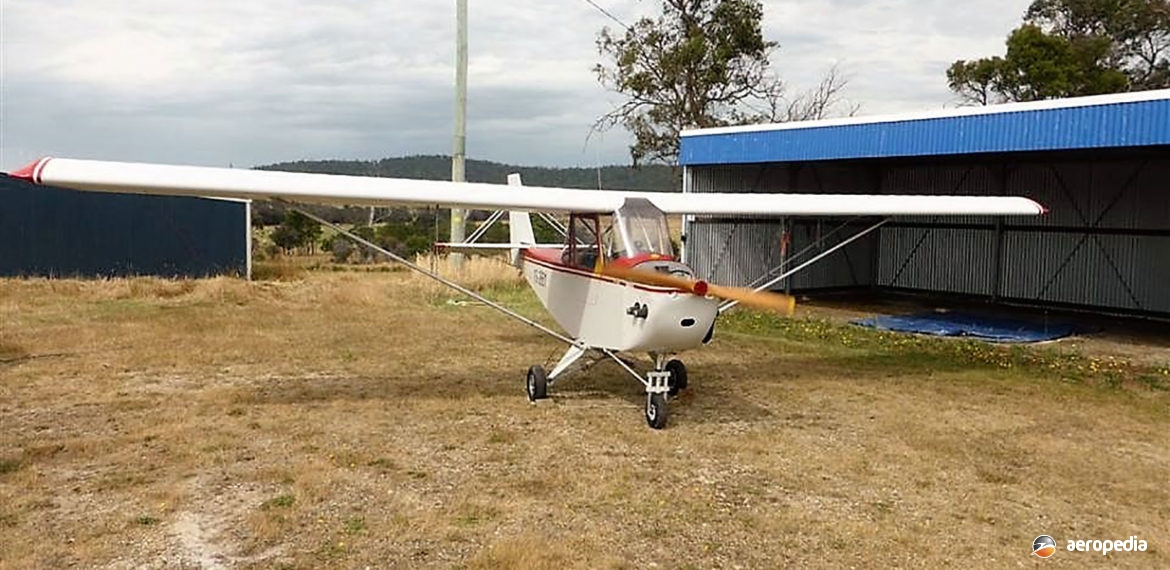Photograph:
An American registered Fisher FP-606 Skybaby (Fisher Flying Products)
Country of origin:
Canada
Description:
Single-seat light sport monoplane
Power Plant:
One 19 kw (25 hp) Hirth F-33 single-cylinder, two-stroke, air-cooled engine
Specifications:
- Wingspan: 8.54 m (28 ft)
- Length: 5.41 m (17 ft 9 in)
- Height: 1.8 m (5 ft 11 in)
- Wing area: 10.79 m² (116 sq ft)
- Never exceed speed: 146 km/h (90 mph)
- Max speed: 105 km/h (65 mph)
- Cruising speed: 97 km/h (60 mph)
- Stalling speed: 42 km/h (26 mph)
- Rate of climb: 244 m/min (800 ft/min)
- Take-off and landing run: 46 m (150 ft)
- Range: 241 km (150 miles)
- Fuel capacity: 19 litres (4.17 Imp gals)
- Empty weight: 113 kg (250 lb)
- Useful load: 113 kg (250 lb)
- Loaded weight: 226 kg (500 lb)
History:
The Fisher FP-606 Skybaby was designed in 1986 to comply with the then FAR 103 Ultralight Vehicles category for light sport aircraft, the category allowing a maximum empty weight of 115 kg (254 lb). The aim of the design was to provide an ultralight aircraft similar in appearance to the Cessna 150 series and to achieve that aircraft’s looks, styling and docile handling.
The FP-606 had the omni-vision style windows of the Cessna and the swept fin that was installed on Cessna 150s after 1965. The wings were the same as those fitted to the Fisher FP-202 Koala but had re-designed wingtips. The experimental model could be fitted with a 28 litre (6.2 Imp gals) fuel tank. Brakes and an electric starter were optional on both models. The design won the 1988 American Experimental Aircraft Association (EAA) Best New Design Award.
Construction was of wood, the fuselage being built from strips arranged in a geodetic form, which produced a very strong but light aircraft. The strut braced wings, tail and fuselage were covered with fabric, the aircraft having a single strut incorporating a V-strut with N-jury struts. No flaps were installed and it could be built with a tailwheel undercarriage or with a tricycle undercarriage.
Engines which could be installed included the 21 kw (28 hp) Rotax 277 and the 19 kw (25 hp) Hirth F-33 but aircraft built in the American amateur-built category have been completed with 30 kw (40 hp) Rotax 447 or 37 kw (50 hp) Rotax 503 engines.
At least one example has been completed in Australia, this being 19-3861 (c/n 6020) registered on 21 January 2003, which was fitted with a Rotax 503 engine and has been based in Tasmania.

